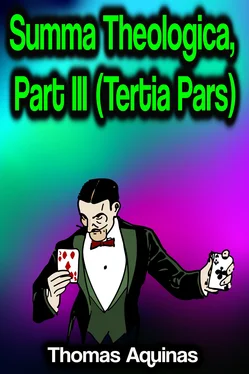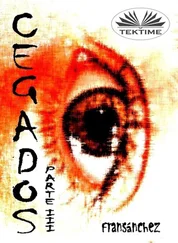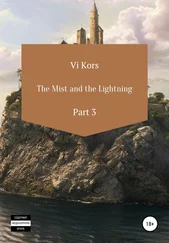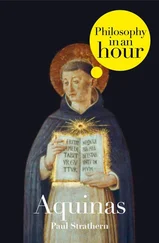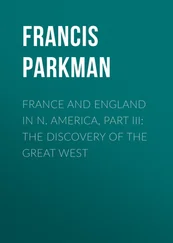Reply Obj. 2: As stated above (Q. 29, A. 1, ad 2) the mystery of Christ's Incarnation is miraculous, not as ordained to strengthen faith, but as an article of faith. And therefore in the mystery of the Incarnation we do not seek that which is most miraculous, as in those miracles that are wrought for the confirmation of faith, but what is most becoming to Divine wisdom, and most expedient to the salvation of man, since this is what we seek in all matters of faith.
It may also be said that in the mystery of the Incarnation the miracle is not only in reference to the matter of the conception, but rather in respect of the manner of the conception and birth; inasmuch as a virgin conceived and gave birth to God.
Reply Obj. 3: As stated above (Q. 15, A. 1, ad 2), Christ's body was in Adam in respect of a bodily substance—that is to say, that the corporeal matter of Christ's body was derived from Adam: but it was not there by reason of seminal virtue, because it was not conceived from the seed of man. Thus it did not contract original sin, as others who are descended from Adam by man's seed. _______________________
SECOND ARTICLE [III, Q. 31, Art. 2]
Whether Christ Took Flesh of the Seed of David?
Objection 1: It would seem that Christ did not take flesh of the seed of David. For Matthew, in tracing the genealogy of Christ, brings it down to Joseph. But Joseph was not Christ's father, as shown above (Q. 28, A. 1, ad 1, 2). Therefore it seems that Christ was not descended from David.
Obj. 2: Further, Aaron was of the tribe of Levi, as related Ex. 6. Now Mary the Mother of Christ is called the cousin of Elizabeth, who was a daughter of Aaron, as is clear from Luke 1:5, 36. Therefore, since David was of the tribe of Juda, as is shown Matt. 1, it seems that Christ was not descended from David.
Obj. 3: Further, it is written of Jechonias (Jer. 22:30): "Write this man barren . . . for there shall not be a man of his seed that shall sit upon the throne of David." Whereas of Christ it is written (Isa. 9:7): "He shall sit upon the throne of David." Therefore Christ was not of the seed of Jechonias: nor, consequently, of the family of David, since Matthew traces the genealogy from David through Jechonias.
On the contrary, It is written (Rom. 1:3): "Who was made to him of the seed of David according to the flesh."
I answer that, Christ is said to have been the son especially of two of the patriarchs, Abraham and David, as is clear from Matt. 1:1. There are many reasons for this. First to these especially was the promise made concerning Christ. For it was said to Abraham (Gen. 22:18): "In thy seed shall all the nations of the earth be blessed": which words the Apostle expounds of Christ (Gal. 3:16): "To Abraham were the promises made and to his seed. He saith not, 'And to his seeds' as of many; but as of one, 'And to thy seed,' which is Christ." And to David it was said (Ps. 131:11): "Of the fruit of thy womb I will set upon thy throne." Wherefore the Jewish people, receiving Him with kingly honor, said (Matt. 21:9): "Hosanna to the Son of David."
A second reason is because Christ was to be king, prophet, and priest. Now Abraham was a priest; which is clear from the Lord saying unto him (Gen. 15:9): "Take thee [Vulg.: 'Me'] a cow of three years old," etc. He was also a prophet, according to Gen. 20:7: "He is a prophet; and he shall pray for thee." Lastly David was both king and prophet.
A third reason is because circumcision had its beginning in Abraham: while in David God's election was most clearly made manifest, according to 1 Kings 13:14: "The Lord hath sought Him a man according to His own heart." And consequently Christ is called in a most special way the Son of both, in order to show that He came for the salvation both of the circumcised and of the elect among the Gentiles.
Reply Obj. 1: Faustus the Manichean argued thus, in the desire to prove that Christ is not the Son of David, because He was not conceived of Joseph, in whom Matthew's genealogy terminates. Augustine answered this argument thus (Contra Faust. xxii): "Since the same evangelist affirms that Joseph was Mary's husband and that Christ's mother was a virgin, and that Christ was of the seed of Abraham, what must we believe, but that Mary was not a stranger to the family of David: and that it is not without reason that she was called the wife of Joseph, by reason of the close alliance of their hearts, although not mingled in the flesh; and that the genealogy is traced down to Joseph rather than to her by reason of the dignity of the husband? So therefore we believe that Mary was also of the family of David: because we believe the Scriptures, which assert both that Christ was of the seed of David according to the flesh, and that Mary was His Mother, not by sexual intercourse but retaining her virginity." For as Jerome says on Matt. 1:18: "Joseph and Mary were of the same tribe: wherefore he was bound by law to marry her as she was his kinswoman. Hence it was that they were enrolled together at Bethlehem, as being descended from the same stock."
Reply Obj. 2: Gregory of Nazianzum answers this objection by saying that it happened by God's will, that the royal family was united to the priestly race, so that Christ, who is both king and priest, should be born of both according to the flesh. Wherefore Aaron, who was the first priest according to the Law, married a wife of the tribe of Juda, Elizabeth, daughter of Aminadab. It is therefore possible that Elizabeth's father married a wife of the family of David, through whom the Blessed Virgin Mary, who was of the family of David, would be a cousin of Elizabeth. Or conversely, and with greater likelihood, that the Blessed Mary's father, who was of the family of David, married a wife of the family of Aaron.
Again, it may be said with Augustine (Contra Faust. xxii) that if Joachim, Mary's father, was of the family of Aaron (as the heretic Faustus pretended to prove from certain apocryphal writings), then we must believe that Joachim's mother, or else his wife, was of the family of David, so long as we say that Mary was in some way descended from David.
Reply Obj. 3: As Ambrose says on Luke 3:25, this prophetical passage does not deny that a posterity will be born of the seed of Jechonias. And so Christ is of his seed. Neither is the fact that Christ reigned contrary to prophecy, for He did not reign with worldly honor; since He declared: "My kingdom is not of this world." _______________________
THIRD ARTICLE [III, Q. 31, Art. 3]
Whether Christ's Genealogy Is Suitably Traced by the Evangelists?
Objection 1: It would seem that Christ's genealogy is not suitably traced by the Evangelists. For it is written (Isa. 53:8): "Who shall declare His generation?" Therefore Christ's genealogy should not have been set down.
Obj. 2: Further, one man cannot possibly have two fathers. But
Matthew says that "Jacob begot Joseph, the husband of Mary": whereas
Luke says that Joseph was the son of Heli. Therefore they contradict
one another.
Obj. 3: Further, there seem to be divergencies between them on several points. For Matthew, at the commencement of his book, beginning from Abraham and coming down to Joseph, enumerates forty-two generations. Whereas Luke sets down Christ's genealogy after His Baptism, and beginning from Christ traces the series of generations back to God, counting in all seventy-seven generations, the first and last included. It seems therefore that their accounts of Christ's genealogy do not agree.
Obj. 4: Further, we read (4 Kings 8:24) that Joram begot Ochozias, who was succeeded by his son Joas: who was succeeded by his son Amasius: after whom reigned his son Azarias, called Ozias; who was succeeded by his son Joathan. But Matthew says that Joram begot Ozias. Therefore it seems that his account of Christ's genealogy is unsuitable, since he omits three kings in the middle thereof.
Читать дальше
